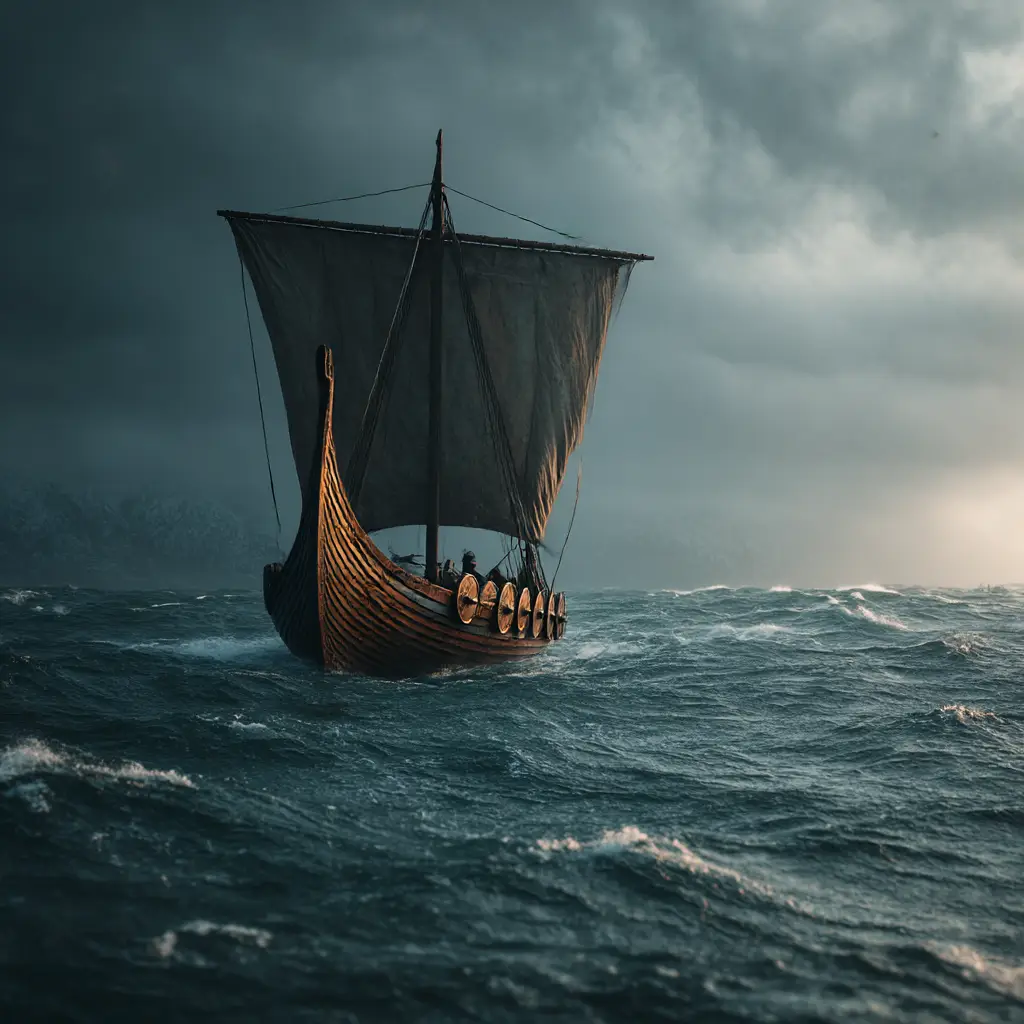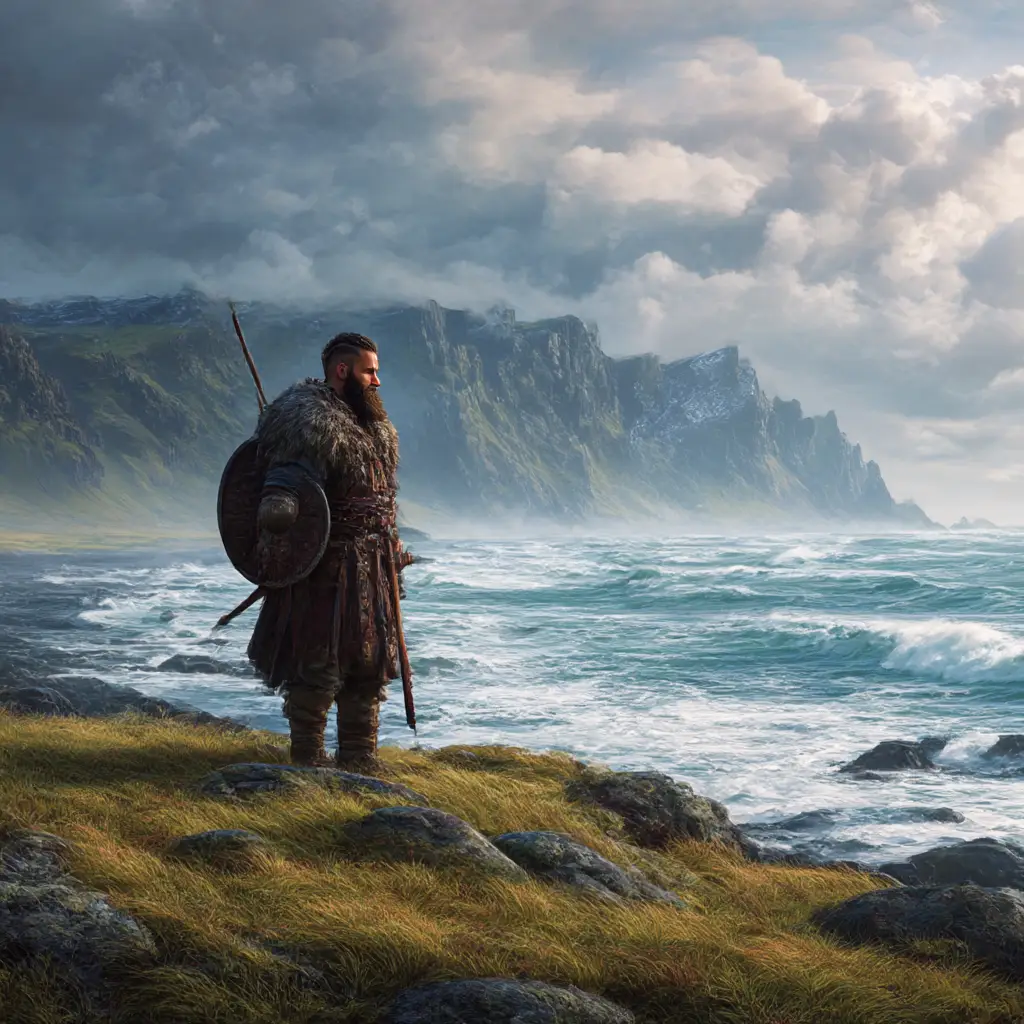The opening chapters of Egils Saga lay the foundation for one of the most remarkable family sagas of medieval Icelandic literature. Covering the early lineage of Egill Skallagrímsson, this part of the saga spans several generations, charting the fortunes, conflicts, and migrations of a family whose legacy is rooted in both Norway and Iceland.
The Origins in Norway
The saga begins in the late 9th century with the powerful chieftain Kveld-Úlfr (Evening Wolf), a man known for his strength, wisdom, and mysterious temperament, possibly tied to shapeshifting or berserker-like tendencies. His son, Úlfr (commonly known as Skallagrímr), inherits many of his father’s formidable qualities. Tensions arise when King Harald Fairhair begins consolidating power in Norway, leading to increasing resistance from independent landowners like Kveld-Úlfr and his family.
As Harald’s influence grows, Kveld-Úlfr seeks to distance himself from the court. However, his son Þórólfr (Thorolf), Skallagrímr’s brother, enters royal service and becomes a favoured warrior. His rising prominence draws envy and political intrigue, ultimately resulting in his downfall and death at the hands of King Harald’s men. This betrayal sows bitterness within the family and leads to a final break with the Norwegian crown.
Exile and Migration to Iceland
In the wake of Þórólfr’s death, Kveld-Úlfr and Skallagrímr refuse to submit to Harald’s rule. After the old man’s passing during the voyage, Skallagrímr leads the family into voluntary exile. They settle in Iceland, part of a broader wave of Norse migration in the 9th and 10th centuries. Skallagrímr claims land in the west of the island, founding what becomes a powerful and independent farming and chieftain family.
The saga provides detailed descriptions of the landtaking process, the establishment of new homesteads, and the legal and social systems developing in the young Icelandic commonwealth. These chapters are rich with genealogical information, grounding the story in the family’s noble ancestry while setting the scene for the extraordinary life of Egill himself.
Themes and Legacy
Chapters 1–27 of Egils Saga are deeply concerned with loyalty, kinship, and the tension between personal honour and royal authority. The narrative moves from the structured, centralised politics of Norway to the freer, more egalitarian society of early Iceland. This transition reflects both historical shifts and the saga’s thematic emphasis on individual freedom and the right to self-determination.
By the end of Chapter 27, the stage is set for the birth of Egill Skallagrímsson, one of the most complex and captivating figures in Old Norse literature — a warrior, poet, and outlaw whose exploits continue the saga’s epic tone.


